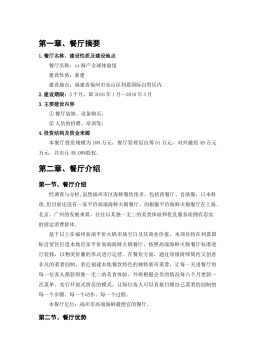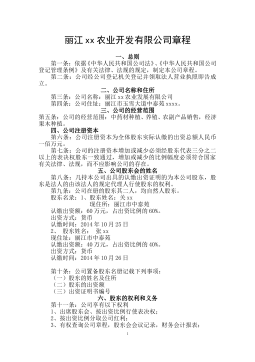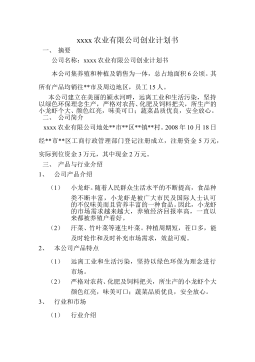供需网企业合作优化及利益分配机制研究
VIP免费
I
摘 要
当前,经济全球化形成了超国界的巨大新市场体系,各国企业在发展中确立
了高度互相依存与互相合作的关系,商品、服务、资本、技术、知识等要素在国
际间的频繁流动,令全球经济活动日趋错综复杂。在这种错综复杂的状态下,各
国企业对新的经济活动都显得有些经验不足。传统的供应链管理模式已日益显现
其不足之处,因此一种全新的企业管理理念---多功能开放型企业供需网模式便应
运而生。
多功能开放型企业供需网(Supply and Demand Network of enterprises with
multi-functional and opening characteristics,简称供需网或 SDN)是指以全球资源获
取、全球制造、全球销售和提高企业综合能力为目标,相关企业之间由于多种“供
需流”的交互作用而形成的一种多功能开放式的供需动态网络模式。SDN 系统以
网络信息平台和相关服务设施为支撑,以全球市场为外部环境的复杂经济系统。
SDN 系统作为复杂的经济系统,其涵盖的各种要素和子系统是非常复杂与繁多的,
这些供需子系统之间以及子系统内部各要素之间以各种方式发生复杂的非线性作
用,在时间和空间上产生各种复杂形式的耗散结构,使 SDN 系统产生相变,促进
SDN 系统从低级到高级、从简单到复杂不断的演化。在演化过程中,SDN 系统适
应性的增强依赖供需子系统之间以及子系统内部各要素之间的合作。SDN 管理的
目的就是使 SDN 系统尽量趋于理想的合作状态。因此,SDN 的合作问题是 SDN
管理的难题,也是首要问题,而 SDN 的合作过程本质上是 SDN 系统各要素之间
合作优化与利益协调的过程。鉴于此,本文以系统科学思想为基础,以博弈论、
智能优化方法、熵理论、混沌理论、演化博弈论、合作对策理论、Topsis 多目标决
策技术作为研究的主要方法,结合企业管理思想和 SDN 系统的发展规律,对 SDN
企业合作优化及利润分配机制进行了尝试性研究。
全文共分 8章:首先是相关文献综述及问题的提出(第 1章);接着是对 SDN
系统的基础研究及复杂性分析(第2章),探讨了 SDN 系统产生非线性行为的根
本原因,详细阐述了供需流熵、结构熵和合作创新能力熵的构建步骤以及 SDN 系
统复杂性有序度的表示方法;其次是对 SDN 企业合作优化的扩展研究(第 3章至
第5章),分别从合作优化决策模型、合作意愿度及演化稳定性、合作伙伴选择及
优化进行论述,建立了 SDN 两节点之间完全合作决策模型和完全非合作决策模型,
比较了供大于求、供小于求和供需相对平衡下两节点的系统利润及产品产量变化
情况,定量地分析企业合作行为的偏好程度及其演化稳定性,深入探讨企业的生
II
产技术水平对企业合作优化决策的影响,并将改进的粒子群智能优化算法应用于
SDN 企业合作伙伴选择的多目标决策模型中;再次是对 SDN 企业利益分配机制进
行研究(第 6章、第 7章),确定了 SDN 企业利益分配机制设置的原则,分析了
SDN 节点之间的博弈格局和利益分配方法,深入探讨了 SDN 节点利益分配模型的
内在机理,提出了基于合作对策理论和 Topsis 法的 SDN 多节点利益分配模型,给
出了 SDN 节点利益分配机制的具体实施方法;最后是本文的总结(第 8章)。
本论文的主要创新之处在于:
(1)基于系统科学的思想,以熵理论和混沌理论为基础,对SDN系统的复杂
性进行度量。该研究能够深化对SDN形成与演化过程的复杂性、合作和协同性的
认识,并通过学科的交叉融合在SDN研究中提出相对新颖的理论观点和研究视角。
(2)运用博弈理论和演化博弈理论的分析方法,构建了SDN企业合作优化决
策模型,深入探讨了SDN企业合作意愿度及演化稳定性。本文将同一产品市场多
供应链的合作优化问题推广到不同产品市场供应链跨链间的合作优化问题,从定
量上分析了SDN两节点之间合作的可能性及合作空间的大小。另外,通过借鉴生
物进化过程中的ESS思想,研究了SDN企业合作意愿度及其演化稳定性。使用该方
法进行研究,不仅可以说明SDN企业的合作动机,而且可以解释SDN企业的合作
优化决策是否具有稳定性,即企业的合作行为能否在长期的演化过程中持续下去。
同时,该方法可以说明有败德行为的企业在什么条件下会侵入或影响整个企业群
体。
(3)将改进的粒子群智能优化方法应用于SDN企业合作伙伴选择的多目标决
策模型中。相比于标准粒子群算法,改进的粒子群算法用于求解SDN企业合作伙
伴选择优化问题具有更加良好的效果,该算法可以快速、精确地为SDN企业找到
最佳的合作伙伴,并且可以扩展到任何数量级上的SDN企业合作伙伴选择问题。
(4)基于合作对策理论和Topsis法,提出了SDN多节点综合利益分配模型。该
模型是一种考虑多种因素的综合利益分配机制模型,有效地避免了单一利益分配
机制模型所带来的缺陷,满足了SDN各节点对合作关系的预期分配利益,既体现
了公平合理的原则,又避免了平均分配吃大锅饭的现象。
关键词:供需网,合作优化,利益分配,系统演化
I
ABSTRACT
At present, a new huge supranational markets system was formed in a situation of
economic globalization, and enterprises in different countries established highly
interdependent and mutually cooperative relationship, and goods, services, capital,
technology, knowledge, and other elements have been frequent movement in the
international market, and all of these factors made more complicated global economic
activities. In such a complex state, enterprises in different countries seem inexperienced
when they faced with new financial activities. Traditional supply chain management
model has been unable to adapt to the fundamental needs of enterprise development, so
a new business management concept --- Supply and Demand Network of enterprises
with multi-functional and opening characteristics came into being.
Supply and Demand Network of enterprises with multi-functional and opening
characteristics (SDN) refers to use access to global resources, global manufacturing,
global sales and improving enterprises' overall ability as a target, due to the multiple
supply and demand flow interaction, a versatile open dynamic network of supply and
demand patterns are formed in the relevant enterprises. SDN system is a complex
economic system based to SDN as the core, and network information platform and
related services as the support technologies, and the global market as external
environment. As a complex economic system, it consists of a very complex and lots of
elements and subsystems, and complex nonlinear interactions played a role between
these subsystems and elements, and in time and space to produce a variety of complex
forms of dissipative structures. All of these factors made the SDN system to produce the
phase change, and promoted continuous evolution of SDN system from lower to higher
and from simple to complex. Enhanced adaptability of SDN system depended on
cooperation of the various elements of the subsystem. SDN management objective is to
make the SDN system to tend to the ideal state of cooperation. Therefore, cooperation
problems of SDN is the difficult problems of SDN management, but also the most
important issue, while the process of cooperation of SDN is essentially the process of
cooperation optimization and profit distribution of SDN system in the various elements.
Based on the above reasons, using the idea of system science, and using game theory,
intelligent optimization methods, entropy theory, chaos theory, evolutionary game
theory, cooperative game theory, topsis multi-objective decision-making technology as
the main research methods, and combining with enterprise system management idea and
II
the regular of SDN development, SDN enterprises cooperation optimization and profit
distribution mechanism were studied in this paper.
Paper was divided into eight chapters. The literature review and the issues were
raised in Chapter 1; The basic research and SDN system complexity were analyzed in
Chapter 2,and the root cause of nonlinear behavior of SDN system was analyzed, and
the building steps of supply flow entropy and structure entropy and collaborative
innovation capability entropy, and the representation methods of order degree of SDN
system complexity were explained in detail; Cooperation optimization of SDN
enterprise was studied in Chapter 3 to Chapter 5. Cooperation decision model,
evolutionary stability and willingness degree of cooperation, partner selection and
optimization were discussed, and appropriate models and frameworks were proposed,
and established a fully collaborative decision-making model and completely
non-cooperative decision-making model between two nodes of SDN, and compared the
system profits of the two nodes and production conditions under the three conditions of
oversupply, less demand, and the relative balance between supply and demand, and
enterprises' preferences and evolution stability were quantitatively analyzed, and the
production technology level on the impact of enterprises cooperation optimization
decisions was discussed in depth, and the intelligent optimization method was applied to
multi-objective decision model of SDN enterprise partner selection; Profit allocation
mechanism of SDN enterprises was studied in Chapter 6 and 7, and the principle of
profit distribution mechanisms of SDN enterprise was established, and the game
patterns of two nodes and the profit distribution methods were analyzed, and the
internal mechanism of benefit distribution model was deeply investigated, based on
cooperation game theory and topsis methods, the profit distribution model of SDN
multi-nodes was constructed, and pecific implementation methods of profit distribution
mechanisms have been proposed; Summary of this paper was discussed in Chapter 8.
The main innovations of this paper:
(1) Based system scientific and entropy theory and chaos theory, the complexity of
SDN system was measured. The research can deepen the process of formation and
evolution of SDN complexity, cooperation and synergy. The new theoretical
perspectives were presented through interdisciplinary fusion.
(2) By using game theory and evolutionary game theory, cooperation optimization
model of SDN enterprise was presented, and cooperation willingness degree of SDN
III
enterprise and evolution stability were analyzed. This paper extent the supply chain
cooperation optimization problem of the same product market to across the chain supply
cooperation optimization problem of different product markets, and cooperation
possibilities and collaboration space of two nodes were quantitatively analyzed. In
addition, by referring to the ESS of biological evolution process, cooperation
willingness of SDN enterprise and its evolution stability were studied. By using this
method, it not only can explain the cooperation motivation of SDN enterprise, and can
explain the stability of the optimal cooperation decision of SDN enterprise, namely
whether the cooperation behavior can continue to exist in the long-term evolution
process. Meanwhile, the method can illustrate under what conditions moral hazard
enterprises can invade or affect the entire enterprise groups.
(3) The improved PSO intelligence optimization method was applied to partner
selection of SDN enterprise. Compared to the standard particle swarm optimization, the
improved PSO algorithm for solving the partner selection optimization problems of the
SDN enterprise has a more favorable effect. The algorithm can quickly and accurately
find the best partners of SDN enterprises, and this method can be extended to any
magnitude partner selection problem of SDN enterprises.
(4) Based on cooperative game theory and topsis method, the comprehensive
profit allocation model of SDN multi-nodes was proposed. The model was the
comprehensive profit distribution mechanism model with a variety of factors, and
effectively avoided the defect of single profit distribution mode, and met the expected
profit distribution of each node. The model can not only embodied the principle of
fairness, but also can avoided the average distribution and big pot phenomenon.
Key Words: SDN, Cooperation optimization,Profit distribution,
System evolution
VI
目 录
中文摘要
ABSTRACT
摘 要 .............................................................. I
第一章 绪论 ......................................................... 1
§1.1 课题研究的背景和意义 ......................................... 1
§1.1.1 课题研究的背景 ......................................... 1
§1.1.2 课题研究的目的和意义 ................................... 4
§1.2 供需网理论及研究综述 ......................................... 4
§1.2.1 SDN 基本理论 .......................................... 4
§1.2.2 SDN 理论研究综述 ...................................... 6
§1.3 企业合作优化模型研究概况 .................................... 10
§1.4 利益分配问题研究概况 ........................................ 13
§1.5 论文的研究内容、研究方法 .................................... 16
§1.5.1 研究内容 .............................................. 16
§1.5.2 研究方法 .............................................. 18
§1.6 研究技术路线与创新之处 ...................................... 18
§1.6.1 研究技术路线 .......................................... 18
§1.6.2 创新之处 .............................................. 20
§1.7 本章小结 .................................................... 21
第二章 SDN 系统的复杂性分析 ........................................ 22
§2.1 SDN 系统的内涵及特征 ....................................... 22
§2.1.1 SDN 系统的基本概念 ................................... 22
§2.1.2 SDN系统的内涵 ....................................... 24
§2.1.3 SDN 系统的特征 ....................................... 25
§2.2 SDN 系统复杂性产生原因及构成体系 ........................... 26
§2.2.1 SDN 系统复杂性产生原因 ............................... 26
§2.2.2 SDN 系统复杂性特征 ................................... 27
§2.2.3 SDN 系统的复杂性构成体系 ............................. 28
§2.3 SDN 系统复杂性度量的熵模型 ................................. 29
§2.3.1 复杂性度量方法综述 .................................... 29
§2.3.2 SDN 系统的供需流熵 ................................... 30
§2.3.3 SDN 系统的结构熵 ..................................... 31
§2.3.4 SDN 系统的合作创新能力熵 ............................. 32
§2.3.5 熵模型构建与描述 ...................................... 34
VII
§2.4 算例分析 .................................................... 37
§2.5 结论及启示 .................................................. 38
§2.6 本章小结 .................................................... 39
第三章 SDN 企业合作优化决策模型 .................................... 40
§3.1 引言 ........................................................ 40
§3.2 模型的描述及假设 ............................................ 41
§3.3 SDN 企业完全合作决策模型 ................................... 44
§3.4 SDN 企业完全非合作决策模型 ................................. 46
§3.5 合作决策优化分析 ............................................ 48
§3.5.1 供小于求 .............................................. 48
§3.5.2 供大于求 .............................................. 48
§3.5.3 供需相对平衡 .......................................... 49
§3.6 算例分析 .................................................... 49
§3.7 本章小结 .................................................... 51
第四章 SDN 企业合作意愿度及演化稳定性研究 .......................... 52
§4.1 引言 ........................................................ 52
§4.2 演化博弈理论及基本概念 ...................................... 53
§4.2.1 演化博弈理论 .......................................... 53
§4.2.2 演化稳定策略 .......................................... 53
§4.2.3 复制动态 .............................................. 54
§4.3 合作意愿度及演化稳定性 ...................................... 55
§4.3.1 合作意愿度 ............................................ 55
§4.3.2 合作意愿度的演化稳定性 ................................ 55
§4.4 竞争为主环境下企业合作意愿度及演化稳定性 .................... 56
§4.5 SDN 环境下企业合作意愿度及演化稳定性 ....................... 58
§4.5.1 SDN 系统中两节点合作决策模型 ......................... 58
§4.5.2 SDN 企业合作意愿度 ................................... 60
§4.5.3 SDN 企业合作意愿度的演化稳定性 ....................... 62
§4.6 算例分析 .................................................... 64
§4.7 模型的结论及启示 ............................................ 65
§4.8本章小结 .................................................... 66
第五章 SDN 企业合作伙伴选择及优化 .................................. 68
§5.1 引言 ........................................................ 68
§5.2 SDN 企业伙伴选择的目标和原则 ............................... 69
§5.3 多目标决策模型的构建 ........................................ 70
VIII
§5.4 理想点法 .................................................... 72
§5.5 编码方案 .................................................... 73
§5.6 改进的粒子群算法 ............................................ 73
§5.6.1 标准粒子群算法 ........................................ 73
§5.6.2 领域均值 .............................................. 74
§5.6.3 边界缓冲墙 ............................................ 75
§5.7 求解的具体步骤 .............................................. 76
§5.8 算例分析 .................................................... 76
§5.9 本章小结 .................................................... 80
第六章 SDN 企业合作利益分配机制研究 ................................ 82
§6.1 利益分配机制设置的原则 ...................................... 82
§6.2 利益分配机制中的合作优化决策 ................................ 83
§6.3 利益分配机制模型的构建 ...................................... 85
§6.3.1 模型的构建 ............................................ 85
§6.3.2 合作意愿度对市场销量的影响 ............................ 87
§6.3.3 合作意愿度对价格的影响 ................................ 88
§6.3.4 合作意愿度对两节点利益的影响 .......................... 88
§6.3.5 合作意愿度对整个供需合作子网利益的影响 ................ 89
§6.4 利益分配机制的实施 .......................................... 90
§6.4.1 利益调节因子的调控范围 ................................ 90
§6.4.2 利益调节因子的变化规律 ................................ 91
§6.5 算例分析 .................................................... 92
§6.6 模型的结论及启示 ............................................ 94
§6.7 本章小结 .................................................... 95
第七章 基于合作对策和 Topsis 的SDN 企业利益分配策略 ................. 96
§7.1 合作对策利益分配理论与方法 .................................. 96
§7.1.1 Shapley 值法 ........................................... 96
§7.1.2 核心理论 .............................................. 97
§7.1.3 Nash 谈判模型 ......................................... 99
§7.2 应用实例及存在的问题 ........................................ 99
§7.2.1 应用实例 .............................................. 99
§7.2.2 存在的问题 ........................................... 102
§7.3 基于合作对策和 Topsis 的SDN 企业利益分配模型 ................ 103
§7.3.1 考虑风险因素的 Shapley 值法 ............................ 103
§7.3.2 引入折衷系数的最小核心法 ............................. 104
IX
§7.3.3 提高协商起点的 Nash 谈判模型 .......................... 105
§7.3.4 Topsis 法 ............................................. 105
§7.3.5 模型的建立 ........................................... 107
§7.4 算例分析 ................................................... 108
§7.5 模型的结论及启示 ........................................... 113
§7.6 本章小结 ................................................... 114
第八章 总结与展望 ................................................. 115
§8.1 研究总结 ................................................... 115
§8.2 研究展望 ................................................... 117
参考文献 .......................................................... 119
攻读博士学位期间发表的论文和参加的科研项目 ........................ 132
致 谢 ............................................................. 134
第一章 绪论
1
第一章 绪论
§1.1 课题研究的背景和意义
§1.1.1 课题研究的背景
1. 经济全球化
世界经济和信息技术的不断发展,使整个世界成为日益紧密联系的经济统一
体。国家、地区间的经济壁垒逐步得到消除,一国的经济会受到其他许多国家经
济的影响,任何一个地区或局部的市场,都会面临国际竞争。在这种背景下,经
济全球化逐渐形成。经济全球化是指投资、贸易、生产、金融等活动的全球化,
即资源、技术等生产要素在全球范围内的广泛流动,以实现资源优化配置。经济
全球化是当代知识经济的重要特征之一,也是世界经济发展的重要趋势。经济全
球化使经济活动在时间和空间上不受过多条件限制,为各国企业的发展提供了更
好的条件和方法,使企业能够在更广泛的空间内寻找客户和合作伙伴。与此同时,
企业在建立全球化市场的同时,也在全球范围内造就了更多的竞争者,加剧了国
际竞争的激烈程度。每个企业都有机会去占领更大的国际市场,但同时也可能因
竞争失利而被市场淘汰。因此,在全球经济一体化下,企业面对的是日益激烈甚
至更加残酷的国际市场竞争。企业竞争的时空体系已经发生了根本的变化,企业
之间合作模式也发生了巨大的改变,传统企业之间的个体竞争模式逐渐被企业群
体间合作竞争模式所取代,形成了以合作共赢、协同为基本特色的“新竞争”格
局[1-3]。
(1)全球生产网络的形成
在全球经济一体化下,企业的合作伙伴遍及全球,生产资料的获得、产品生
产的组织、货物的流动和销售、信息的获取都是在全球范围内进行和实现的。企
业的形态和边界发生根本的变化,甚至是国与国之间的边界概念也产生了巨大的
变化,区域的界限在全球经济一体化下逐渐淡化。企业的运作是按照国际分工协
作的原则,利用全球生产网络,实现资源在全球范围内合理分配、流动和优化配
置。目前,不仅全球生产网络已形成,而且区域网络也在不断地发展。全球及区
域网络发展的一个直接结果就是导致多功能开放型企业供需网(SDN)的形成和
发展。
相关推荐
-
生态农业项目商业计划书VIP免费
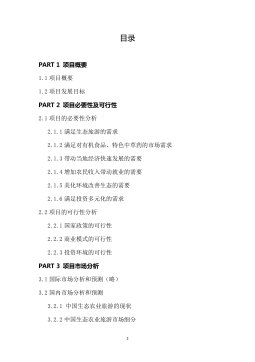
 2024-12-31 30
2024-12-31 30 -
牛奶创业计划书VIP免费
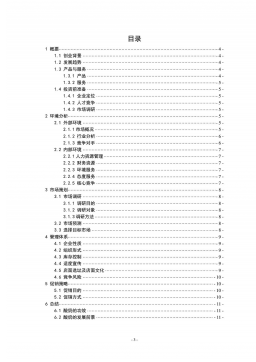
 2024-12-31 6
2024-12-31 6 -
南京现实版开心农场VIP免费

 2024-12-31 8
2024-12-31 8 -
绿色蔬菜农产品批发创业计划书VIP免费

 2024-12-31 10
2024-12-31 10 -
绿色农产品销售创业计划书VIP免费

 2024-12-31 8
2024-12-31 8 -
xx蔬菜配送有限公司创业计划书样本VIP免费
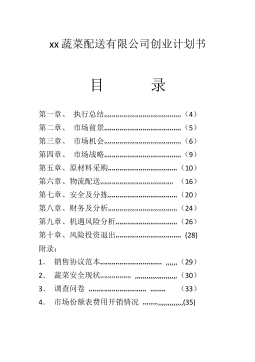
 2025-01-09 5
2025-01-09 5 -
现代农业生态园创业计划书范文VIP免费
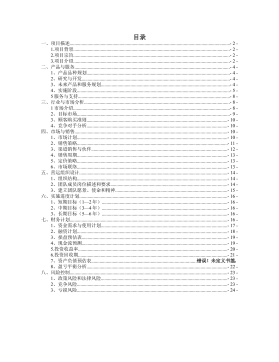
 2025-01-09 12
2025-01-09 12 -
农场创业计划书模板VIP免费
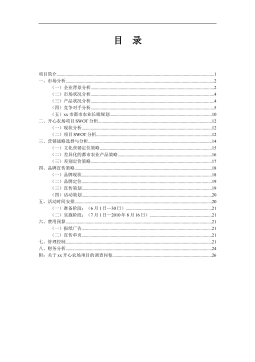
 2025-01-09 17
2025-01-09 17 -
奉节县特色农产品电子商务创业计划书模板VIP免费
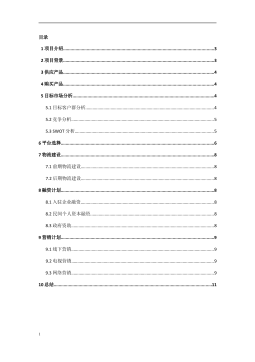
 2025-01-09 13
2025-01-09 13 -
中国首家IT高科技化农林项目商业计划书VIP免费
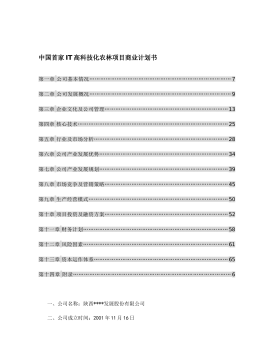
 2025-01-09 11
2025-01-09 11
作者:赵德峰
分类:高等教育资料
价格:15积分
属性:140 页
大小:4.21MB
格式:PDF
时间:2025-01-09






